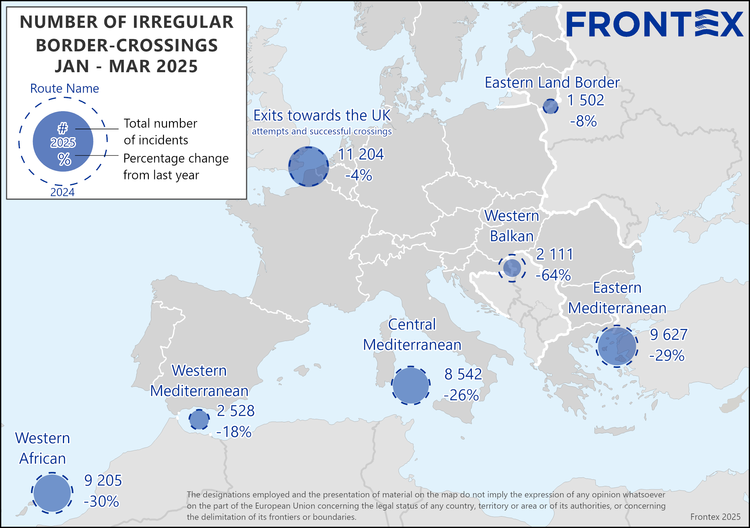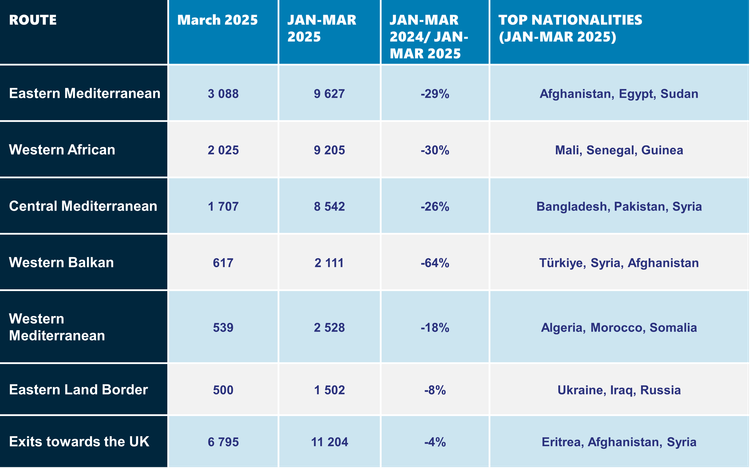The number of irregular border
crossings into the European Union fell by 31 % in the first quarter of 2025 to
nearly 33 600, according to preliminary data collected by Frontex*.
This decline was observed across
all major migratory routes into the EU, with drops ranging from 64% along the
Western Balkan route to 8% along the Eastern Land Border.
Some 3 200 Frontex officers along
the EU's external borders supports national authorities in their efforts to
protect Europe's borders and save lives at sea.
The Eastern Mediterranean
and Western African routes are the most active pathways for irregular
migration so far this year. The Eastern Mediterranean was the busiest,
with 9 630 arrivals between January and March. Migrants on this route primarily
originated from Afghanistan, Egypt, and Sudan.
The Western African route
followed closely, with 9 200 recorded arrivals during the same period. This
represents a 30% decrease compared to the first quarter of 2024.
The Central Mediterranean
registered 8 500 irregular crossings in the first quarter of 2025. This
represents a 26% decrease compared to the first quarter of 2024. In March
alone, the number of registered arrivals fell by three-quarters year-on-year.
Poor weather conditions were among the factors behind this drop.
Many risk their lives trying to
cross the sea relying on services of smugglers. The International Organization
for Migration (IOM) estimates that in just the first three months of 2025, 385
people lost their lives at sea. In all of last year, this tragic number reached
2 300.
On the Channel route, the
number of migrants attempting to cross into the United Kingdom dropped by 4%
compared to last year, with detections slightly above 11 200.
* Note: The preliminary data
presented in this statement refer to the number of detections of irregular
border crossing at the external borders of the European Union. The same person
may cross the border several times in different locations at the external
border.

